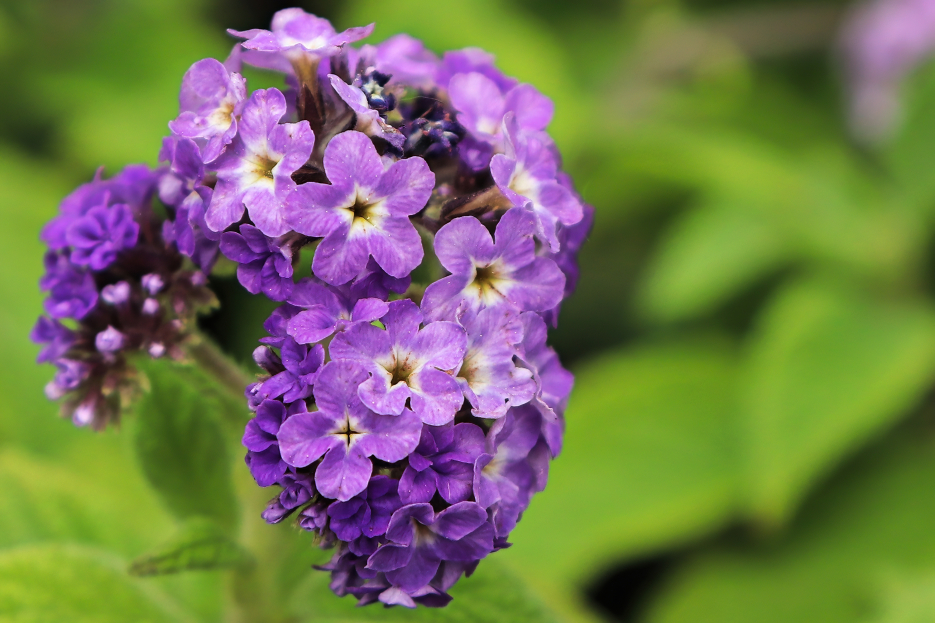
Known for its rich, vanilla-like fragrance and vivid clusters of purple, lavender, or white flowers, Heliotrope is a romantic garden favorite with a history as old as Victorian flower beds. Scientifically known as Heliotropium arborescens, this tender perennial (often grown as an annual) is beloved for its nostalgic scent, bee-friendly blooms, and deep green, textured foliage.
The name "heliotrope" comes from the plant’s tendency to turn its flowers toward the sun, like little solar trackers—“helios” meaning sun and “tropos” meaning turn in Greek.
Whether planted in garden beds, window boxes, or containers, heliotrope is a great choice for gardeners who love scented blooms and classic charm.
Heliotrope thrives in full sun but appreciates a bit of afternoon shade in especially hot climates. Aim for at least 6 hours of sunlight per day to encourage the best flower production and fragrance.
In areas with intense heat, partial sun (morning sun with afternoon shade) can prevent leaf scorch and keep the plant looking its best.
Heliotrope prefers consistent moisture, but it doesn't like soggy soil. Water when the top inch of soil feels dry, and be sure to water deeply to encourage strong root development.
Container-grown heliotrope may need more frequent watering, especially in summer heat. Avoid letting the plant completely dry out, as this can stress the plant and reduce blooming.
Plant heliotrope in well-draining, fertile soil enriched with compost or organic matter. It prefers slightly acidic to neutral pH. In containers, use a high-quality potting mix with good drainage.
Good drainage is essential, as overly wet soil can lead to root rot or other fungal issues.
Feed heliotrope every 2–4 weeks during the growing season with a balanced liquid fertilizer to support flower production and lush growth. In containers, fertilizing may need to be more frequent, as nutrients leach out with regular watering.
Over-fertilizing can lead to more leaves and fewer flowers, so avoid heavy-handed feeding.
Heliotrope is not frost-tolerant and thrives in temperatures between 60–80°F (15–27°C). It’s perennial in USDA zones 10–11, but is typically grown as an annual elsewhere.
Wait until after the last frost to plant outdoors. In colder regions, you can overwinter heliotrope indoors in a bright spot or grow it year-round as a houseplant.
To keep heliotrope blooming, deadhead spent flowers regularly. This encourages more blooms and keeps the plant tidy. You can also pinch back the tips of young plants to encourage bushier growth.
At the end of the season, cut back the plant before bringing it indoors for winter (if overwintering).
Heliotrope can be propagated from stem cuttings or seeds. Cuttings are typically taken in late summer or early spring and rooted in water or moist soil. Seed-starting is slower and should be done indoors 10–12 weeks before your last frost date.
Heliotrope can be susceptible to whiteflies, spider mites, aphids, and powdery mildew. Keep an eye out for pests, especially on indoor plants, and treat infestations early with insecticidal soap or neem oil.
Provide good air circulation and avoid wetting the leaves to prevent fungal issues.
Heliotrope is considered toxic to pets (especially cats and dogs) if ingested. It contains pyrrolizidine alkaloids that can affect liver function. Keep it out of reach of curious pets or children